Gorky Park’s retro heritage
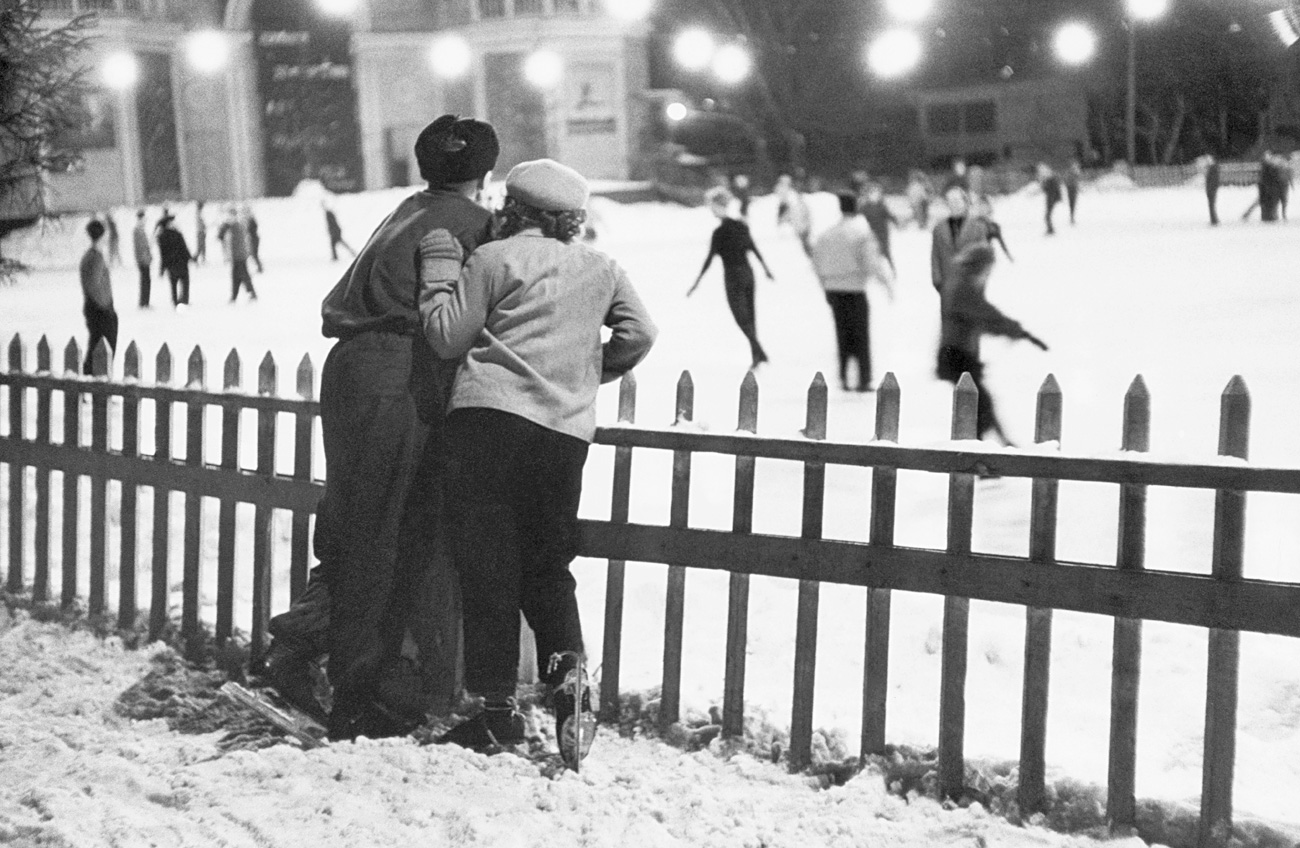
Couple Watching Skaters in Gorky Park Jan. 1, 1900.
Getty ImagesIn her book Celebration is Always with Us, Gorky Park's first director Betti Glan writes that in 1931, the park became the first one in the world to have its attractions work through the winter. That year, thousands of people made their way across the park’s ice and snow by skates, skis or sleighs every day. Many also strolled along the garland-decorated snowy alleys. It was just the beginning of Gorky Park’s significance for surviving the long Russian winters.
Skating and skiing
In the 1930s, the Gorky Park ice rink was the biggest in the city, and extremely popular. It contained 125,000 square meters of ice. Squares, stadiums, alleys and the waterfront were flooded with ice, as many of them are today.
 Muscovites at the Gorky Park, 1931 / Source: archive of Gorky Park
Muscovites at the Gorky Park, 1931 / Source: archive of Gorky Park
The ice rink was decorated with twinkling lights and dance music played. The atmosphere evoked a fairytale, for both children and adults. Between 15,000-20,000 people came to the rink every day — a huge number, even by today’s standards.
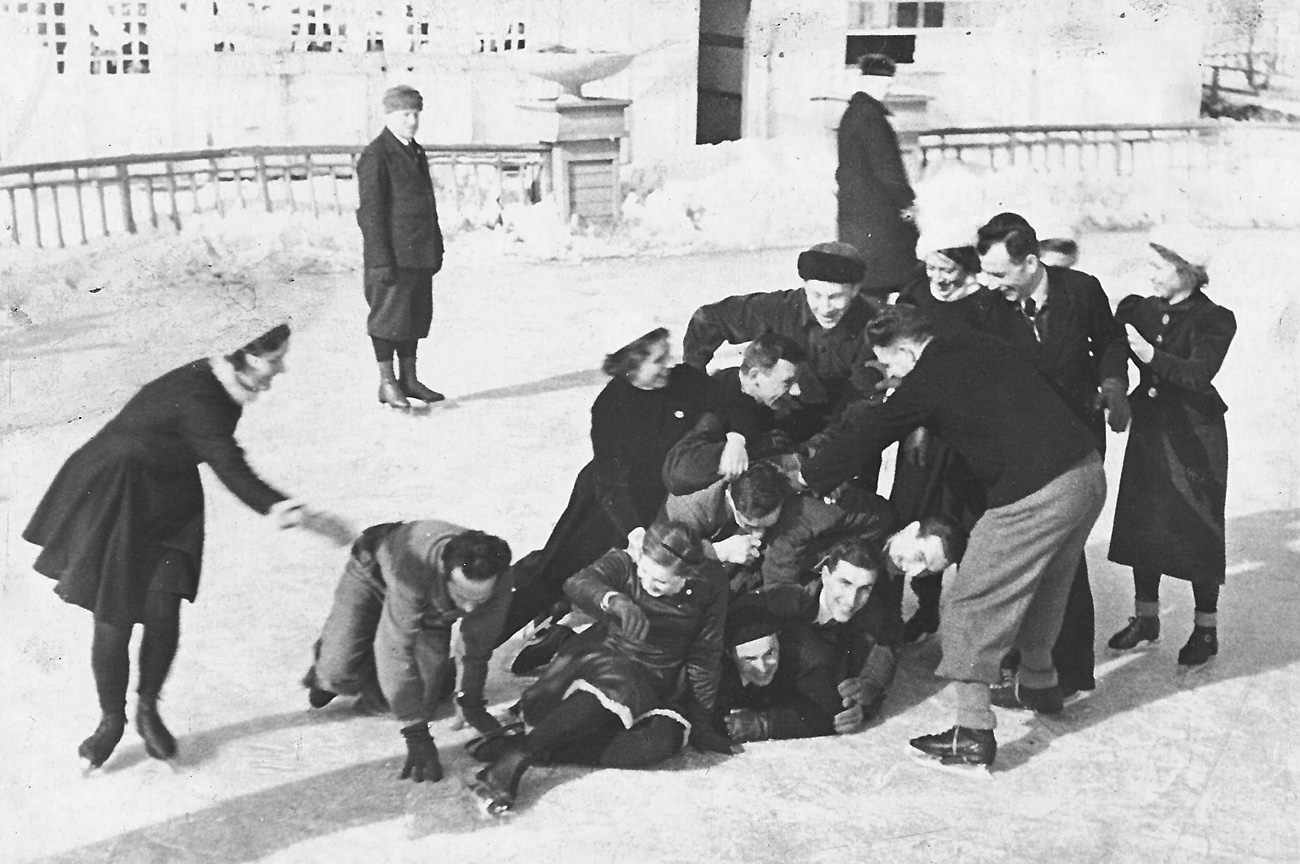 At the Gorky park, 1939. / Source: archive of Gorky Park
At the Gorky park, 1939. / Source: archive of Gorky Park
Many Muscovites learned to ice skate in the park and tried their hands at figure skating. In 1931, a figure skating school was set up in the park by figure skater, coach and judge Samson Glyazer. The school was open to everyone: people could come, rent a pair of skates and join the practice sessions. Many Russian ice skaters who went on to participate in the Olympic Games and Figure Skating World Championships began their athletic careers at Glyazer's school.
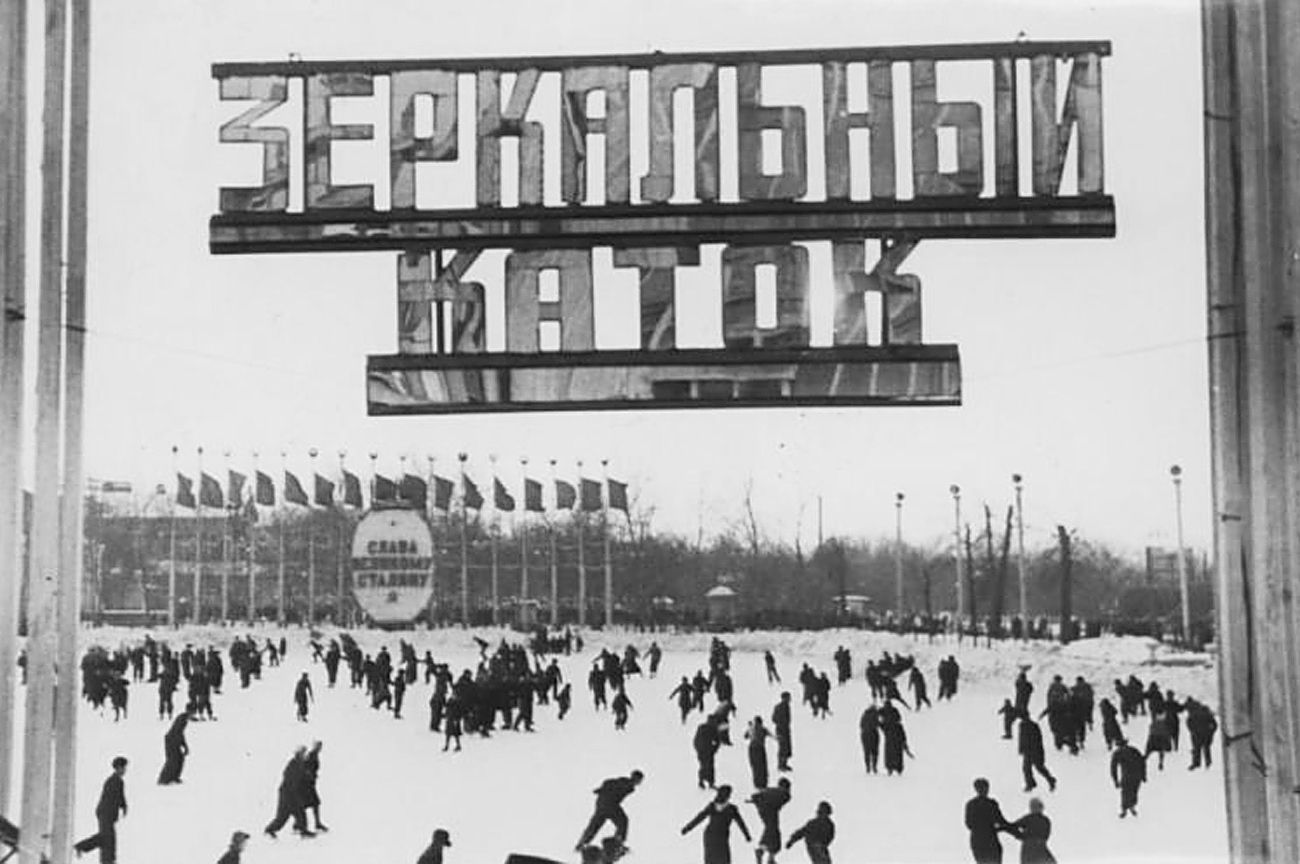 An ice rink near the main entrance/ archive of Gorky Park
An ice rink near the main entrance/ archive of Gorky Park
On with the show
Professional figure skaters and ice dancers who trained in the park also put on shows for visitors. In the 1960s, these performances were broadcast on TV. The shows would usually take place during the weekends, when trucks carrying military cavalry bands playing would drive along the park's alleys and squares.
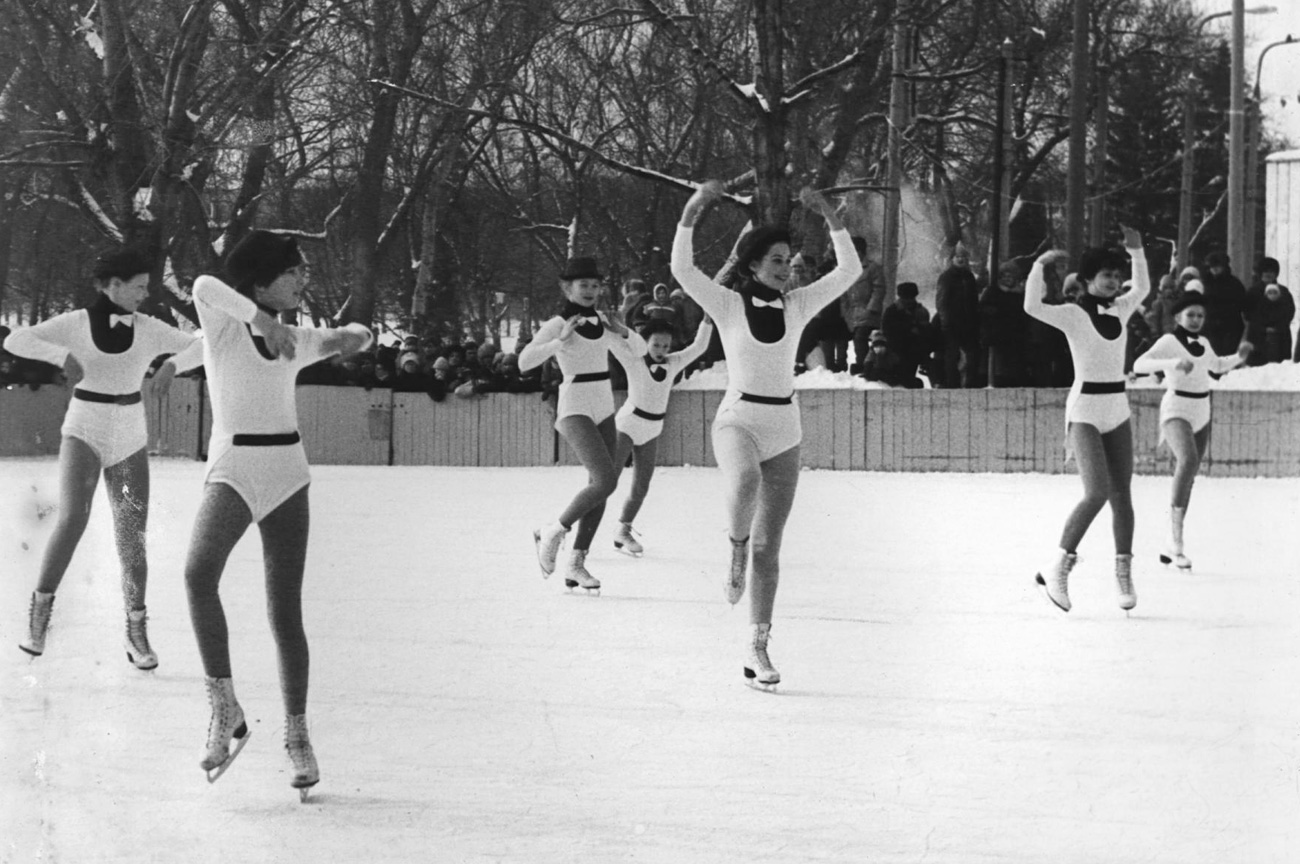 Competion in memory of Samson Glyazer, February 1987. / Source: archive of Gorky Park
Competion in memory of Samson Glyazer, February 1987. / Source: archive of Gorky Park
Betti Glan also invited Soviet celebrities for the festivities, including the writer Alexei Tolstoy and actors from the stage and screen.
Often actors from children’s theaters were booked for the winter shows and entertainment. Like the large Mickey and Minnie Mouse figurines in Disneyland, Gorky Park had its own protagonists: a happy cow on ice skates and the antagonistic couple Pat and Patashon.
Going to extremes
People were constantly creating new ways to play on the snow and ice. In the 1930s, people would ski behind a horseman, a motorcycle or a truck. It was the extreme sport of the era. These kind of competitions were often held on Feb. 23, which was Red Army Day in the Soviet Union, a national holiday.
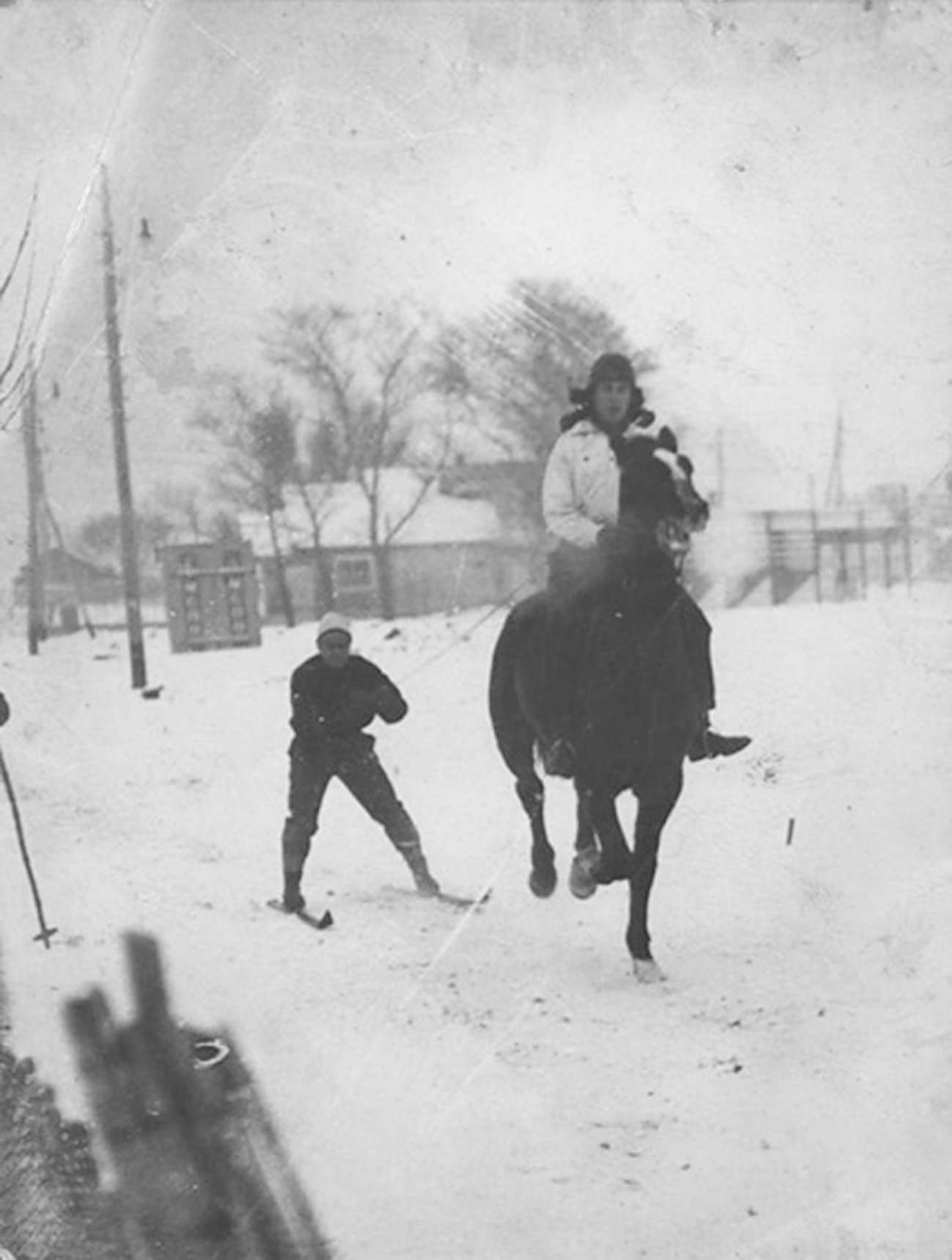 Gorky Park, 1930s. / Source: archive of Gorky Park
Gorky Park, 1930s. / Source: archive of Gorky Park
The Feb. 23 celebrations were extensive. The day began with soldiers carrying banners and posters accompanied by brass bands. The groups would ski along the ice of the Moscow River in front of the grandstands set up on the waterfront. Later there would be races involving skaters and daredevil skiers speeding behind motorcycles. In the evenings, actors and ice dancers would put on performances.
 Ice rink, 1950s. / Source: archive of Gorky Park
Ice rink, 1950s. / Source: archive of Gorky Park
Celebrate like a walrus
Winter swimming became popular in Moscow in the 1980s. At that time people could swim in the park's Golitsynsky and Andreevsky Ponds and in the Moscow River, if it was not frozen. Ice swimmers, colloquially called “walruses” in Russian, jumped into the water from the sides of barges and small vessels docked at the waterfront. Then they would come out using steps mounted on wooden footbridges.
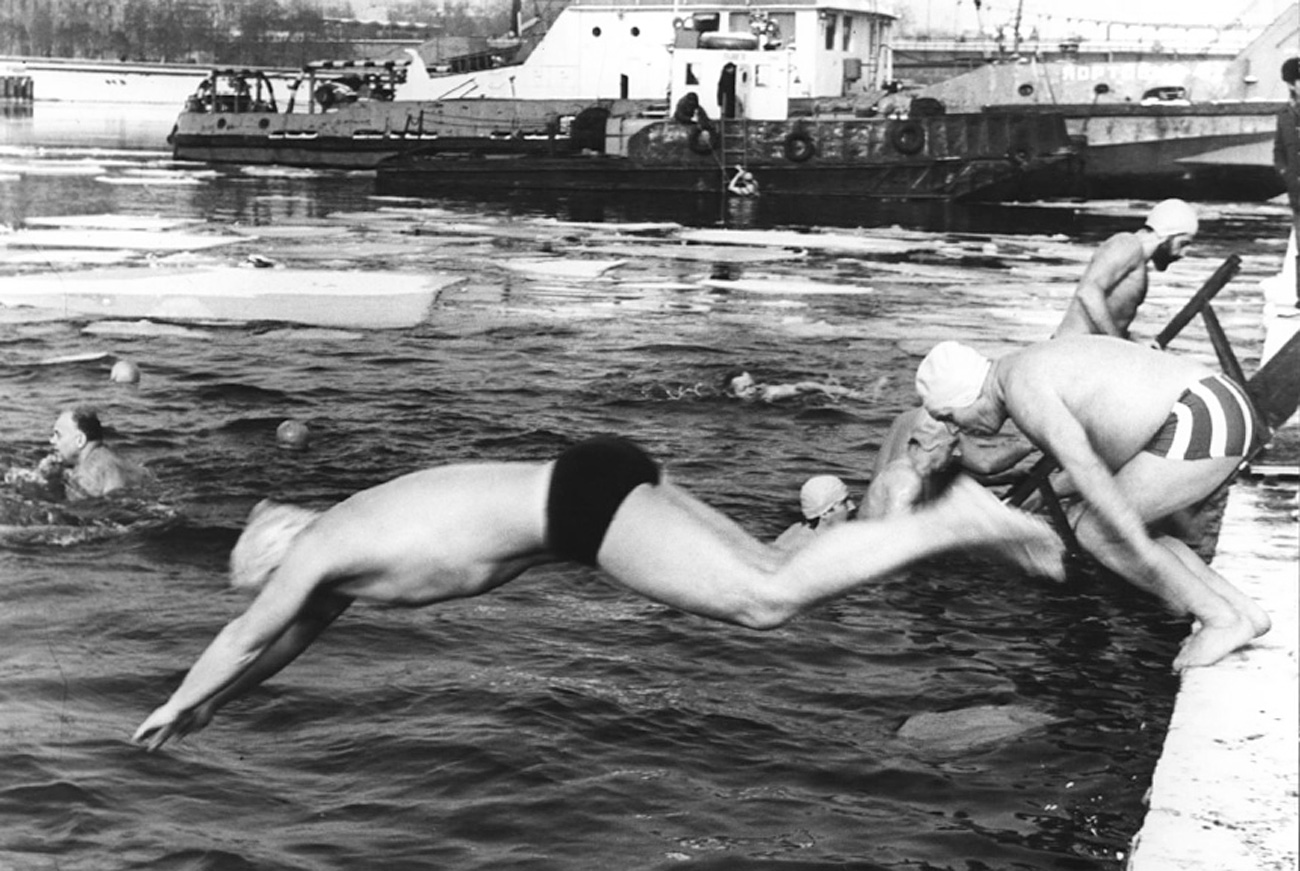 Winter swimming, 1980s. / Source: archive of Gorky Park
Winter swimming, 1980s. / Source: archive of Gorky Park
Winter swimmers from various parts of Moscow would dive in on Feb. 23 and during the Epiphany frosts in the second half of January, although the association with the religious holiday was not publicized officially.
This text has been abridged from the original version in Russian.
Read more: The woman behind Gorky Park’s rebirth
Subscribe to get the hand picked best stories every week
All rights reserved by Rossiyskaya Gazeta.
Subscribe
to our newsletter!
Get the week's best stories straight to your inbox